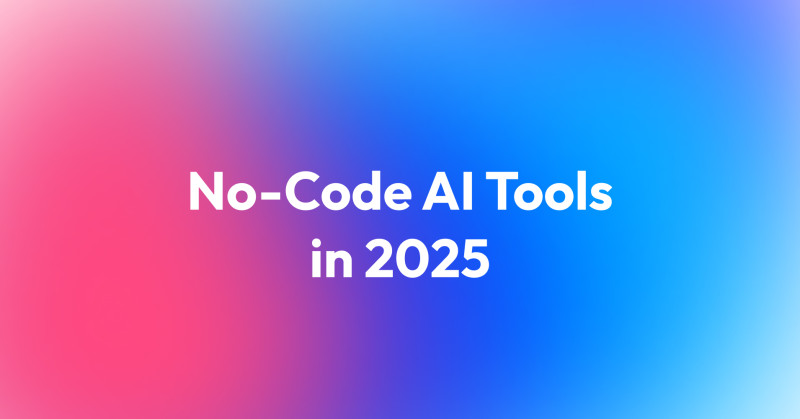In the world of maritime shipping, where efficiency is measured in fractions of a percent and operational costs run into billions, the ability to optimize every aspect of a voyage can make all the difference. Now, imagine having a tool that not only predicts the best routes but also reduces fuel consumption, cuts down on emissions, and helps manage entire fleets with unprecedented precision. That tool is Google AI, and it's changing the game for shipping companies around the globe.

As one of the world's most crucial industries grapples with the twin pressures of increasing demand and the urgent need to reduce its environmental impact, the integration of AI into maritime operations couldn't have come at a better time. Google AI is leading this transformation, providing shipping companies with the tools they need to operate more efficiently and sustainably. This article delves into how Google AI is not just enhancing the bottom line for these companies but also helping them navigate the complex waters of environmental responsibility and operational excellence.
What is Google AI?
Google AI is a branch of Google focused on developing and applying artificial intelligence technologies across various domains. Google AI encompasses a wide range of tools, algorithms, and machine learning models designed to solve complex problems by analyzing vast amounts of data, recognizing patterns, making predictions, and automating processes. These technologies are implemented across Google’s services and external partnerships, enabling innovative solutions in areas such as search engines, digital assistants, healthcare, finance, and logistics.
How Does Google AI Work?
Google AI operates through advanced machine learning models, particularly deep learning algorithms, which are trained on massive datasets. These models learn from data by identifying patterns and correlations, enabling them to make predictions or decisions without explicit programming for every scenario. For example, Google AI can optimize search engine results, understand natural language queries, translate languages, and even drive autonomous vehicles. The system's learning is continuous—improving over time as it processes more data and encounters more scenarios.
Key components of Google AI include:
Neural Networks: Mimicking the human brain’s structure, neural networks process information in layers to make sense of complex data.
Natural Language Processing (NLP): This allows Google AI to understand and generate human language, making tools like Google Assistant and translation services possible.
Computer Vision: Google AI can recognize and interpret visual information, enabling features like image search and automated photo categorization.
What Can Google AI Do?
Google AI can perform a wide range of functions, including:
Analyzing large datasets to identify trends, optimize operations, and support decision-making processes.
Automating repetitive tasks, such as managing emails, setting appointments, or even driving cars.
Providing personalized content recommendations, such as in YouTube or Google News, based on user behavior and preferences.
Predicting outcomes based on historical data, helping businesses in logistics, finance, and other industries optimize their operations.
How AI Fuels the Transformation of Shipping Industry?
Artificial Intelligence (AI) is revolutionizing the shipping industry by fundamentally changing how maritime operations are conducted. Through advanced data analysis and automation, AI is enabling the shipping industry to become more efficient, sustainable, and responsive to the complex demands of global trade.
One of the most significant ways AI is transforming the industry is through route optimization. AI algorithms can process vast amounts of data, including weather conditions, ocean currents, and port traffic, to identify the most efficient routes for ships. This capability reduces travel time, lowers fuel consumption, and decreases greenhouse gas emissions, leading to both cost savings and a reduced environmental footprint. For example, companies like CMA CGM are leveraging AI to enhance their route planning, ensuring that their vessels operate as efficiently as possible while minimizing delays.
AI is also pivotal in improving fuel efficiency and reducing emissions. By optimizing ship routes and enhancing hull maintenance through AI-powered robotics, the energy required to propel ships is significantly reduced. These AI-driven robots clean ship hulls more effectively than traditional methods, minimizing the drag caused by biofouling. This reduction in drag directly translates to lower fuel consumption and fewer carbon emissions, aligning the industry with global sustainability goals.
In addition to operational efficiency, AI plays a crucial role in predictive maintenance. By analyzing data from sensors on ships, AI can predict when equipment is likely to fail, allowing for proactive maintenance. This approach minimizes unexpected breakdowns, reduces downtime, and lowers maintenance costs. It also enhances safety by ensuring that vessels are always in optimal condition before they set sail.
Moreover, AI is transforming inventory and logistics management within the shipping industry. AI tools help optimize container handling and warehouse operations by accurately forecasting demand and planning shipping schedules. This reduces the need for unnecessary movements, such as transporting empty containers, thereby enhancing operational efficiency and reducing costs.
Read more: Which AI Services Best Suit Your Business Needs?
Compliance and risk management are other areas where AI is making a significant impact. The global shipping industry is subject to a complex array of regulations concerning emissions, safety, and environmental protection. AI helps companies monitor these regulations in real-time, ensuring compliance and reducing the risk of penalties. This capability is increasingly important as international regulations become more stringent in response to environmental concerns.
Lastly, AI is paving the way for autonomous shipping, which could revolutionize the industry by reducing the need for human crews and enhancing safety through automated decision-making. Although still in development, autonomous ships promise to operate with greater precision and efficiency, further reducing operational costs and environmental impact.
In conclusion, AI is not only making the shipping industry more efficient and profitable but is also driving it towards a more sustainable and innovative future. As AI technologies continue to evolve, their role in the maritime sector will only grow, leading to even more significant improvements and advancements in how global trade is conducted.
Challenges Faced by Maritime Shipping Companies
Maritime shipping companies face several significant challenges that impact both their efficiency and environmental sustainability. One of the primary challenges is fuel consumption and emissions, as the industry is a major contributor to global greenhouse gas emissions. Companies are under increasing pressure to reduce their carbon footprint while maintaining operational efficiency, which is difficult due to the high energy demands of shipping. Another challenge is route optimization, which involves navigating complex factors such as weather conditions, geopolitical issues, and port congestion. Inefficient routing can lead to longer voyages, increased fuel consumption, and delays.
Biofouling, the accumulation of marine organisms on ship hulls, presents another significant challenge. This buildup increases drag on the vessels, leading to higher fuel consumption and, consequently, more emissions. Efficiently managing biofouling is crucial to maintaining the operational efficiency of ships without harming the environment. Additionally, maritime companies must grapple with the need to maintain high operational efficiency while controlling costs. This includes managing container handling, inventory, and schedules to avoid unnecessary delays and optimize resource use.
Regulatory compliance is also a major concern. The maritime industry operates under a complex web of international regulations related to safety, emissions, and environmental protection. Staying compliant with these regulations is challenging, especially as they continue to evolve, requiring companies to constantly monitor and adapt. Finally, maritime shipping companies must be resilient to supply chain disruptions caused by global events such as pandemics, political instability, or natural disasters, which can lead to delays and financial losses. These challenges require companies to be adaptable, innovative, and proactive in managing their operations.
How Google AI is Helping Maritime Shipping Companies Become More Efficient and Reduce Carbon Footprint
Route Optimization
Google AI is being used by maritime shipping companies like CMA CGM to optimize vessel routes, ensuring that ships take the most efficient paths. This optimization not only reduces fuel consumption but also minimizes delays, leading to faster delivery times and lower operational costs. By optimizing routes based on real-time data, these AI tools help shipping companies avoid adverse weather conditions and congested shipping lanes, further enhancing fuel efficiency and reducing carbon emissions.
Smart Inventory Management
Through AI-driven tools, companies can better manage container handling and inventory. This includes predicting demand more accurately, which allows for better planning of shipping schedules and warehouse operations. The integration of AI in inventory management helps in minimizing the movement of empty containers, a common issue in the industry, thereby reducing unnecessary fuel usage and emissions.
Biofouling Management with Robotics
Google AI is also playing a role in reducing fuel consumption through the use of robotics to manage biofouling. Biofouling, which is the accumulation of marine organisms on the hulls of ships, increases drag and fuel consumption. AI-powered robots, such as those developed by Neptune Robotics, clean the hulls of ships more efficiently than traditional methods. This not only reduces the fuel required to propel ships but also lowers greenhouse gas emissions, contributing to the shipping industry's overall sustainability efforts.
Operational Efficiency and Carbon Footprint
The partnership between CMA CGM and Google is part of a broader strategy to digitalize and decarbonize the maritime industry. By incorporating AI into their operations, these companies aim to achieve greater efficiency across all facets of shipping—from route planning to warehouse management—resulting in a significant reduction in their carbon footprint. These advancements are critical as the industry seeks to align with global targets for reducing greenhouse gas emissions.
Future-Proofing the Industry
The collaboration with Google is also helping maritime companies future-proof their operations. As the industry faces increasing pressure to meet stringent environmental regulations, AI provides a pathway to continuous improvement in efficiency and sustainability, ensuring that companies can adapt to and thrive in a rapidly changing regulatory environment.
These advancements illustrate how AI, particularly through collaborations with tech giants like Google, is transforming the maritime shipping industry by enhancing operational efficiency and driving significant reductions in carbon emissions.
Streamlining Maritime Industry using AI
As the maritime industry sails toward an increasingly complex and demanding future, the integration of AI, particularly through partnerships with tech giants like Google, is proving to be a game-changer. The efficiency gains, cost savings, and environmental benefits are clear indicators that AI is not just a temporary upgrade but a permanent shift in how global shipping operates. By harnessing the power of AI, shipping companies are not only optimizing their current operations but also paving the way for a more sustainable and innovative future.
In a world where every drop of fuel and every minute on the sea counts, the role of Google AI in transforming maritime shipping cannot be overstated. This is more than just technology—it's a strategic advantage that will define the future of an industry essential to global trade. As we move forward, the collaboration between technology and maritime shipping will only deepen, setting new standards for efficiency, sustainability, and resilience across the seas.





















